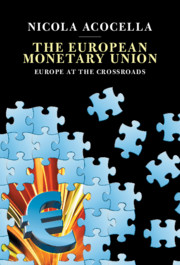Book contents
- The European Monetary Union
- The European Monetary Union
- Copyright page
- Dedication
- Contents
- Figures
- Tables
- Preface
- Acknowledgments
- Abbreviations
- Part I The Historical and Institutional Background
- Part II Institutions and Policies in Action
- 4 Asymmetries, Macroeconomic and Microeconomic Imbalances
- 5 The Great Recession
- 6 Policies and Institutions Put to the Test of the Great Recession
- 7 Asymmetries, Imbalances, Signals, and Incentives to Change
- Part III Lines of Reform of EMU Institutions
- References
- Index
6 - Policies and Institutions Put to the Test of the Great Recession
from Part II - Institutions and Policies in Action
Published online by Cambridge University Press: 19 August 2020
- The European Monetary Union
- The European Monetary Union
- Copyright page
- Dedication
- Contents
- Figures
- Tables
- Preface
- Acknowledgments
- Abbreviations
- Part I The Historical and Institutional Background
- Part II Institutions and Policies in Action
- 4 Asymmetries, Macroeconomic and Microeconomic Imbalances
- 5 The Great Recession
- 6 Policies and Institutions Put to the Test of the Great Recession
- 7 Asymmetries, Imbalances, Signals, and Incentives to Change
- Part III Lines of Reform of EMU Institutions
- References
- Index
Summary
The policies implemented in the EMU and the differences with the United States are described in Chapter 6. They added to the negative consequences of the institutional differences. The content of the policies implemented in the two areas was rather different. More importantly, the evolution of the crisis and the outcomes of policies remarkably differ. In Europe the original determinants of the crisis were of a purely financial nature, as in the United States. However, they evolved into a sovereign debt crisis, which was not the case in the United States. We attribute this largely to the different institutions in the two areas, in addition to the policies enacted, which were anyway to a large extent constrained by these institutions. Policymakers were either incapable of taking the opportunity to reform them or interested in keeping them and making them to serve national or other interests. Monetary policies have prevailed in both the United States and EMU, but in Washington they have been complemented by federal fiscal policies in the initial, decisive, phase of the crisis. By contrast, no similar expansionary policy was implemented in Europe, where fiscal policies were managed at the state level and were generally deflationary.
Keywords
- Type
- Chapter
- Information
- The European Monetary UnionEurope at the Crossroads, pp. 185 - 207Publisher: Cambridge University PressPrint publication year: 2020

